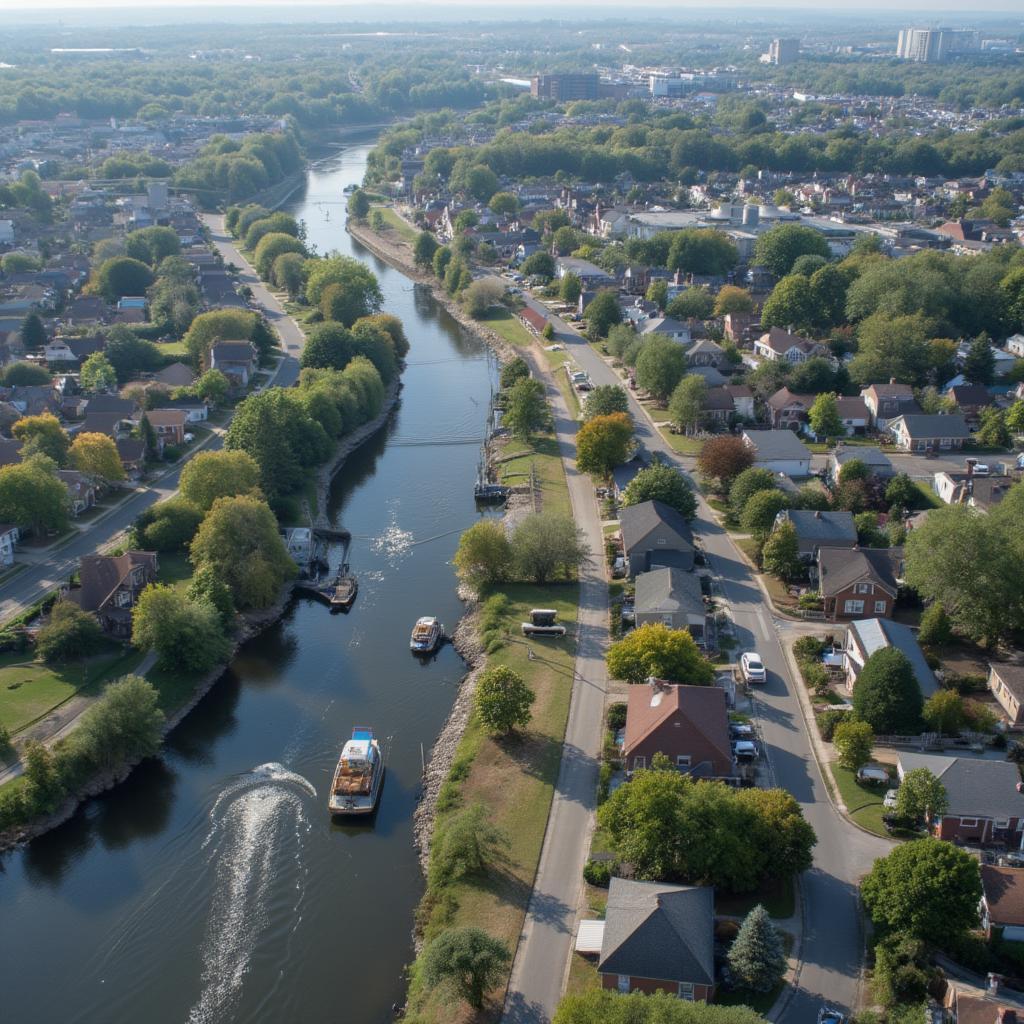The term “love canal” might evoke images of romantic waterways, but the reality is far more grim. What Is A Love Canal? It’s a stark reminder of the devastating consequences of environmental negligence. This term refers specifically to a neighborhood in Niagara Falls, New York, that became infamous in the late 1970s as a toxic waste dump. This article delves into the history of Love Canal, its impact, and the lessons learned from this environmental disaster.
The History of Love Canal: From Dream to Disaster
 Love Canal: A Toxic Legacy
Love Canal: A Toxic Legacy
William T. Love envisioned a utopian community powered by hydroelectric energy. He began digging a canal in the late 19th century, but the project was abandoned, leaving behind an unfinished ditch. In the 1940s, the Hooker Chemical Company began using the canal as a chemical waste dump. Over 21,000 tons of toxic waste were buried there. Years later, the land was sold to the Niagara Falls School Board, and a neighborhood was built on top of the buried chemicals.
Uncovering the Toxic Truth: Health Crisis at Love Canal
By the late 1970s, residents began experiencing alarming health problems. High rates of birth defects, miscarriages, and various illnesses were reported. The toxic waste, which included dioxin, benzene, and PCBs, was leaching into the soil, water, and even basements of homes. Lois Gibbs, a resident whose son suffered from epilepsy and other health issues, became a leading activist in bringing the crisis to national attention.
The Impact of Love Canal on Environmental Awareness
The Love Canal tragedy served as a wake-up call. It exposed the dangers of improper waste disposal and highlighted the need for stronger environmental regulations. The disaster led to the creation of the Superfund program in 1980, a federal initiative designed to clean up hazardous waste sites across the United States. Love Canal also played a crucial role in raising public awareness about environmental issues and the importance of holding corporations accountable for their actions.
Love Canal Today: A Scarred Landscape and Lasting Lessons
The Love Canal area underwent extensive remediation efforts. Many homes were demolished, and the contaminated soil was contained. While some families returned to the area, the stigma remains. Love Canal serves as a constant reminder of the long-term consequences of environmental damage and the importance of preventing such disasters in the future. What happened at Love Canal directly influenced regulations and public awareness concerning chemical waste management. It’s a testament to the power of community activism and the need for constant vigilance in protecting our environment. Would you move to a place known for its toxic history? Probably not, and that’s the legacy Love Canal carries.
Conclusion: Remembering Love Canal – A Call to Action
The Love Canal disaster is a tragic chapter in environmental history. It reminds us of the importance of responsible waste management, strong environmental regulations, and the power of community advocacy. While the physical scars of Love Canal may have faded, the lessons learned remain crucial. We must remember Love Canal not only as a symbol of environmental devastation, but as a call to action to protect our planet for future generations.
FAQ:
- What types of chemicals were dumped in Love Canal?
- What were the health effects observed in Love Canal residents?
- What is the Superfund program, and how did Love Canal contribute to its creation?
- What is the current status of the Love Canal area?
- What can we learn from the Love Canal disaster?
- What role did Lois Gibbs play in the Love Canal crisis?
- What are some similar environmental disasters that have occurred since Love Canal?
Love Canal: Exploring Love and its Different Forms
Thinking about love in different contexts, you might find interesting articles about different aspects of love and relationships on our website. Check out our piece on why i love anal for a different perspective on intimacy.
Cities of Love and Poetic Expressions
Explore the concept of love further with our article on which is the city of love and delve into a poetic expression of love with how do i love thee holland.
For any further support or inquiries, please contact us at contact@daiduongtranhba.com or visit our office at Michigan Ave, Suite 3100, Chicago, IL 60611, USA. Our customer service team is available 24/7.


